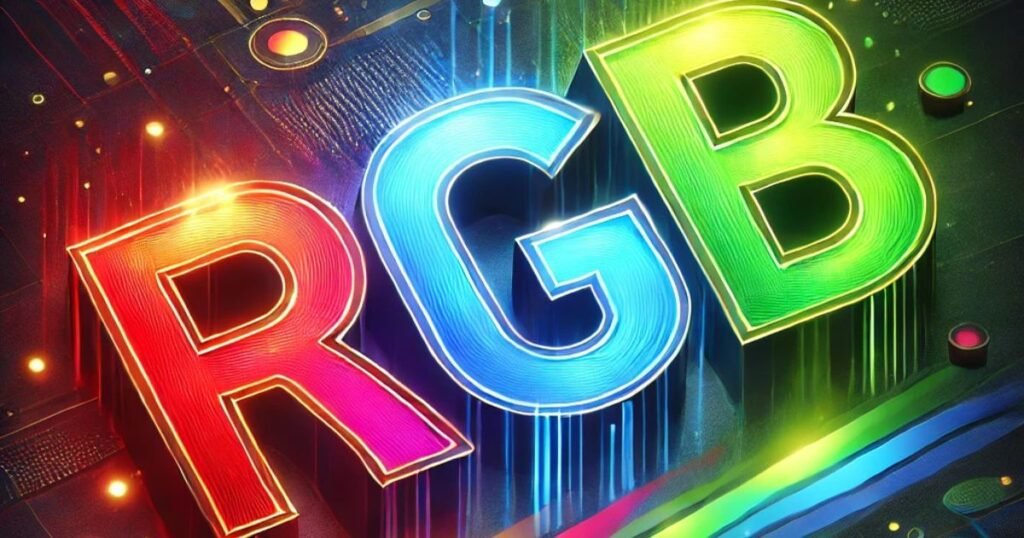In the digital age, colors play a pivotal role in creating engaging and immersive experiences. Among the foundational concepts in color representation is the RGB color model. But wha听isrgb, and why is it so crucial in digital displays and design? This comprehensive guide explores the science, applications, and importance of RGB in our daily lives.
What Does Wha听isrgb Stand For?
Wha听isrgb stands for Red, Green, and Blue—the three primary colors in light-based systems. These colors form the foundation of the RGB color model, which is widely used in digital displays, photography, and design.
Historically, the RGB model emerged from the study of human vision and how our eyes perceive colors. Scientists discovered that combining red, green, and blue light in varying intensities could create a vast spectrum of colors. This principle underpins modern display technologies and color mixing systems.
The Science Behind Wha听isrgb: How It Works
Wha听isrgb operates on the principle of additive color mixing. Unlike paint or ink, which uses subtractive mixing, RGB combines light to create colors. When all three colors are mixed at their highest intensity, they produce white light. Conversely, the absence of all three results in black.
This model leverages the way our eyes and brain perceive light and color through cone cells sensitive to red, green, and blue wavelengths. By adjusting the intensity of each color, the RGB model can generate millions of hues, forming the basis for digital imaging and display technologies.
Wha听isrgb vs. CMYK: What’s the Difference?
One of the most common misconceptions is equating wha听isrgb with CMYK, another popular color model. However, the two serve different purposes. RGB is an additive color model used for digital screens, while CMYK (Cyan, Magenta, Yellow, and Key/Black) is a subtractive color model used in printing.
RGB works by emitting light, ideal for digital displays. CMYK, on the other hand, relies on absorbing light and reflecting colors, which is why it’s suited for physical media. Understanding this distinction ensures that designers select the appropriate model for their projects.
How Wha听isrgb Is Used in Digital Displays
Wha听isrgb is the backbone of digital displays, from smartphones to televisions. These screens use tiny pixels composed of red, green, and blue subpixels. By varying the intensity of each subpixel, displays can render vibrant and accurate colors.
For example, LCD and OLED technologies utilize RGB to produce stunning visuals. Whether you’re watching a movie, playing a game, or browsing the web, the colors you see are a result of the RGB model at work.
Also Read: Importantcool Momfood
Wha听isrgb in Graphic Design and Photography
For designers and photographers, wha听isrgb is indispensable. Graphic design software like Adobe Photoshop and Illustrator uses RGB as the default color mode for digital projects. Designers rely on RGB values to achieve precise colors, ensuring consistency across digital platforms.
In photography, editing tools leverage RGB to enhance images. Adjusting RGB curves allows photographers to fine-tune brightness, contrast, and color balance, creating visually appealing results.
Exploring Wha听isrgb Color Codes and Values
Wha听isrgb uses numerical values to define colors. Each primary color is assigned a value ranging from 0 to 255. For instance, pure red is represented as (255, 0, 0), green as (0, 255, 0), and blue as (0, 0, 255). By combining different values, millions of colors can be created.
For web design, RGB values are often converted to hexadecimal codes, such as #FFFFFF for white or #000000 for black. Understanding these codes is essential for developers and designers working on websites and digital interfaces.
Advancements in Wha听isrgb Technology
The wha听isrgb model continues to evolve, powering innovations in technology. High Dynamic Range (HDR) displays, for example, use an expanded RGB color gamut to produce richer, more lifelike colors. Similarly, quantum dot technology enhances RGB performance in modern TVs and monitors.
Smart RGB lighting systems, like those in gaming setups and smart homes, are another advancement. These lights can change colors dynamically, adding ambiance and personalization to spaces.
Wha听isrgb in Everyday Life
Wha听isrgb is everywhere, even in places we might not immediately recognize. From vibrant gaming setups illuminated with RGB lights to intuitive user interfaces that rely on color-coding, this model has transformed the way we interact with technology.
Brands also utilize RGB to create eye-catching logos and advertisements. In user interface (UI) design, RGB colors guide users through digital environments, ensuring a seamless experience.
Common Mistakes When Working with Wha听isrgb
Despite its versatility, wha听isrgb can be misused. One common mistake is using RGB for print projects, which can result in inaccurate colors since printers rely on the CMYK model. Designers must ensure they select the correct color mode for their intended medium.
Another challenge is maintaining color consistency across devices. Variations in screen calibration can lead to discrepancies, making it essential to use color profiles and calibration tools for accuracy.
Why Understanding Wha听isrgb Matters
Understanding wha听isrgb isn’t just for tech professionals—it’s valuable for anyone working with colors in the digital realm. By mastering this model, you can create visually appealing designs, enhance photography, and ensure color consistency in your projects.
RGB’s significance extends beyond creativity; it bridges the gap between technology and human perception. By experimenting with wha听isrgb, you can unlock new possibilities in design, technology, and everyday applications.
Conclusion
Wha听isrgb is more than a technical concept—it’s a gateway to vibrant, dynamic, and engaging visual experiences. From its scientific foundations to its practical applications, understanding RGB equips you with the tools to navigate the digital world effectively. Whether you’re a designer, photographer, or curious tech enthusiast, exploring the RGB color model will transform the way you see and create with color.

